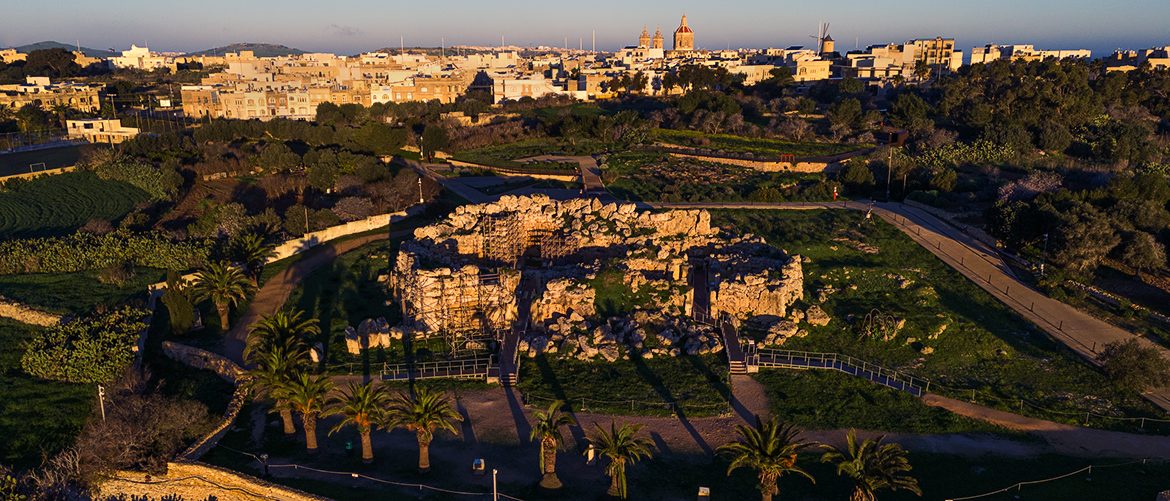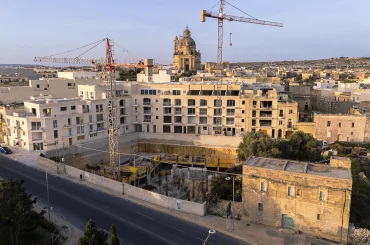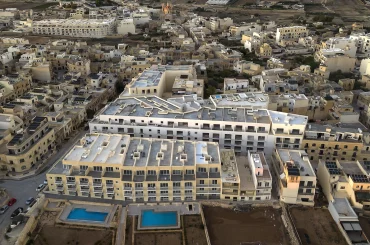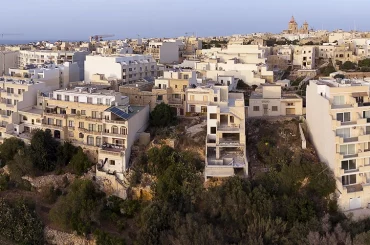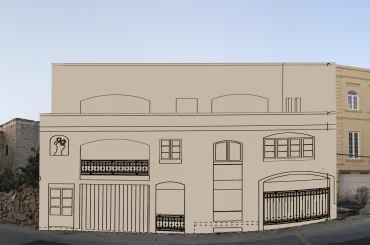If the height of buildings in an entire area of two-storey townhouses had to increase by more than a half over the existing height – as a building permit delivered three weeks has done, setting a new standard for the area – would it make a difference visually and materially?
It depends on the location. And this is precisely the issue here, a location triply sensitive: the core of the buffer zone of Ggantija Temples, the protected setting of Ta Kola Windmill, and one of the last enclaves in the Maltese islands that survives as a neighbourhood of two-storey townhouses. It does not get any more sensitive than this.

And aside from the issue of greater height – which would disfigure the classical skyline and streetscapes of the Ggantija's setting – equally damaging is the transformation in the area. At present the area at the core of Ggantija's buffer zone consists of charming community-engendering two-storey townhouses – redevelopment into flats would change it into an urban area of dense, soulless flats and vehicle congestion. The permit delivered three weeks ago, for a four-storey block of flats, would mark the beginning of this process – there are currently another three applications for 5-storey block of flats awaiting decision.
Redevelopment of the area into multi-storey blocks of flats would really detract from the experience of the temples, and UNESCO (which stands for United Nations Environmental, Social and Cultural Organisation) would almost certainly remove Ggantija from the World Heritage List.
You think I am exaggerating? Then consider this: UNESCO has been expressing concern over potentially damaging developments in Ggantija’s buffer zone for a decade. In a motion in 2014, it requested to be “informed” of any development proposals so that it could “assist in seeking appropriate solutions to ensure that the Outstanding Universal Value of the property [Ggantija] is fully preserved.” A year later, it asked the Maltese government for a report on the effect that proposed changes to planning policies would have on developments in the buffer zone.
But rather than inform UNESCO, or submit any report – or conduct any heritage impact assessment pursuant to obligations arising from the World Heritage Convention – the Maltese government approved three developments in the buffer zone. The permit of one of them was revoked and sent for reassessment (on 7 March; a decision expected to be challenged, in a bid to get a revocation and leave it at that), and the second one is being attacked in separate revocation proceedings.
The third permit (the subject of this article) was granted three weeks ago – a four-storey block of flats that, as already pointed out, would be higher and bulkier (in architecture referred to as greater 'massing') than the predominant two-storey townhouses in the neighbourhood.

The permit, if left unchallenged, would set a new minimum standard: buildings throughout the neighbourhood would be allowed to have at least four floors and greater lateral density.
I write ‘at least’ because Malta’s disjointed planning system is beset with stories of blocks of flats growing incrementally over the years, with the Planning Authority at times being imaginative in approving developments on basis of a similar development somewhere else, even in another town. And we do not have to go far to find one such example. It is situated down the street from Ta Kola, a building that sits just outside Ggantija’s buffer zone.
The building, initially built around 15 years ago, had already been one of the highest buildings in the area when a new application sought to expand it five years ago.
The Superintendence of Cultural Heritage wrote to the Planning Authority that the building “is already one of the highest in the street [in fact it’s the highest in the street], creating unsightly blank walls in a street dominated by two storey buildings,” and then pointed out that “further increase in height will aggravate this issue and will have a negative impact on the views of the scheduled windmill.”
The response of the Planning Authority’s case officer? First he partly justified the height by comparing it to another development in another town, and then he concluded: “The creation of additional blank walls would be mitigated when the adjoining buildings reach the maximum allowable heights.”

In plainer English, once the entire area is redeveloped into higher buildings, there would be no blank walls left because the entire neighbourhood would become a mass of high buildings.
We cannot do anything about that building due to legal term limits. It also falls outside the buffer zone.
But we can make a stand on the extent of developments within the buffer zone. And, to this end, the four-storey granted permit three weeks ago is crucially-important and insidious – it sets a new standard for developments within the buffer zone of at least four storeys.

There are solid legal grounds against the permit. And four NGOs have coalesced around a plan to lodge a legal appeal against the permit if enough funds are raised from donations. The four NGOs are Flimkien Ghal Ambjent Ahjar, Moviment Graffitti, Wirt Ghawdex and Ghawdix.
The NGOs are seeking to raise the €2,500 needed in legal costs. Please pitch in, let us safeguard our heritage for our children.
To donate, please click on this link – and then click on the channel named APPEAL against flats ruining Xaghra Windmill/Ggantija Setting.
Donate to the NGOs legal appeal by clicking on the button below, and then click to donate to the channel named "APPEAL against flats ruining Xaghra Windmill/Ggantija Setting", and finally click on the Buy button to donate.

